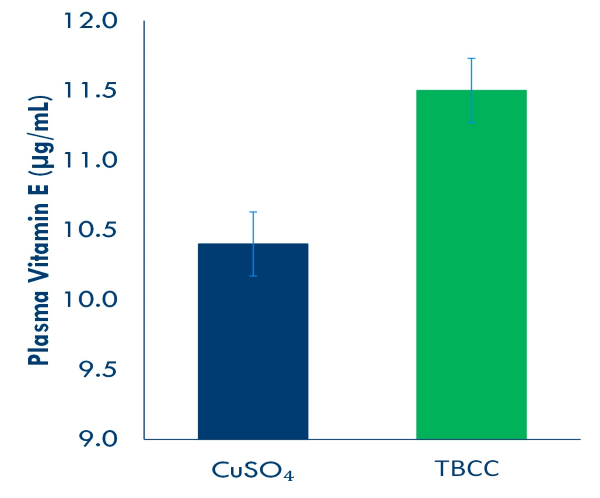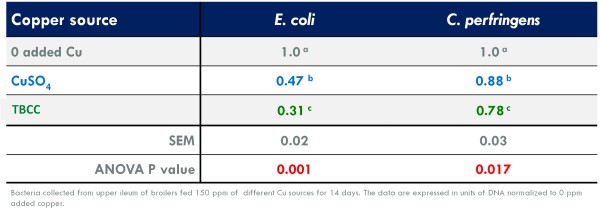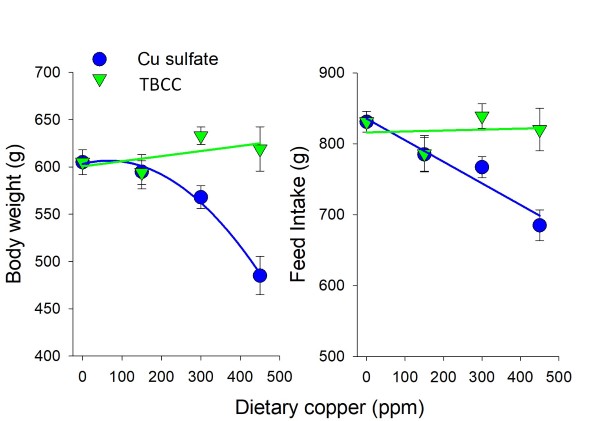Role of high copper in optimizing poultry gut health
- R&D
- Dr. Rajesh Pittala & Dr. Sabiha Kadari, Technical Team, Trouw Nutrition India Pvt Ltd
Copper is an essential trace mineral in the poultry diet. It plays a critical role in supporting immune function, antioxidant defence, bone strength, iron metabolism, haemoglobin synthesis, erythrocyte production etc., subsequently leading to optimal growth and productive performance in poultry. These are the functions attributed by copper when it is fed in nutritional levels (ranging from 5-30 ppm) and metal is delivered to meet the physiological and metabolic needs of poultry.
That said, it must be borne in mind that copper has been used for centuries as a famous antimicrobial to safeguard public health, with various modes of actions been documented in that regard. There are various literatures that cite copper been used as an antibacterial agent, fungicide, nematicide, molluscicide, algicide, water purifier, antifouling agent etc. In animal nutrition, this antimicrobial action of copper can be achieved when the animals are fed with higher levels of copper. Higher copper level manages microbes in the gastrointestinal tract by influencing the environment in the distal portion of the intestinal tract thereby improving the overall feed efficiency, growth rate, gut integrity, and health of chicken.
Feeding high copper levels:
Great caution needs to be exercised when adopting this practice as the high copper inclusion could negatively influence the interrelationship with the other minerals like iron, zinc and interfere with the retention of several vitamins including A, E, K and B1, reducing the phytase efficacy, affecting the overall feed stability etc. This limitation can be handled by feeding the right form of copper at higher levels. The former negative interactions are highly possible when copper is fed in the sulphate form, whilst the same can be handled when copper is fed in the Tri Basic Copper Chloride (TBCC) form. In a recent study, it was observed that there was 11% increase in plasma Vitamin E levels, when copper was fed in TBCC form as opposed to copper sulphate form, indicating the positive impact of TBCC on vitamin E retention, as shown in Fig. 1.
Fig. 1: Trace mineral sources on plasma Vitamin E

In yet another study, the effect of high copper on ileal microbial content was measured post 4 hours of inoculation and was found that TBCC was significantly (statistically) reduced the E. coli and C. perfringens counts than copper sulphate, as shown in Fig. 2 below.
Fig. 2: Effect of different sources of copper on ileal microbial counts

TBCC – the right form to be fed:
In-vivo trials with birds indicated that TBCC at higher inclusion levels, improved the body weight and feed intake of birds, whereas these performance indicators (BW & FI) were negatively influenced when copper sulphate was added at higher levels, Fig. 3.
Fig. 3: TBCC improved growth performance of birds when fed at higher levels

Review of literature suggests that in-vitro supplementation of copper source at 125 mg leads to increase in lactobacilli with concomitant decrease in E. coli at 250 mg after 24 hrs. of incubation at 370C. Copper supplementation at 36.5 mg/kg body weight reduced the viable count of E. coli and clostridial in small intestine and caecum. TBCC at 185 mg/Kg increases illeal mucosa associated bacterial community of broilers. Several feeding trials with TBCC have depicted that when fed at the right levels can negate the necrotic enteritis challenge in birds. These benefits are since TBCC exerts its beneficial effects in the jejunum, ileum and further down in the gut.
Along with this hydroxy form of copper (TBCC), hydroxy forms of zinc and manganese, when coupled with chelated forms of trace minerals, can yield better feed quality, feed efficiency and bioavailability of trace minerals. IntelliOpt, from Trouw Nutrition, has been designed and developed based on this concept, that effectively fulfils the nutritional requirement of trace minerals, subsequently enhancing the growth and productive performance of birds.
Mechanism of Action:
Probable mechanism of action of high copper is by favouring the growth of beneficial gut microbiota and reducing harmful bacteria in intestine which leads to reduced intestinal lymphocyte recruitment and infiltration thus increasing nutrient absorption. Antibacterial action of copper depends on concentration of free ionic copper. High Copper level leads to increase in beneficial bacteria and decrease in harmful bacteria which can be evident as reduced faecal metabolites which are indicative of better protein and carbohydrate digestion suggesting improved digestion of dietary nutrients. The above-mentioned benefits can be realized when copper is fed in the TBCC form.
Conclusion:
Adding high copper levels provides both bacteriostatic and bactericidal properties and limits colony growth for multiple species of pathogenic bacteria inclusive of gram positive (Clostridium spp.) and gram negative (E. coli, Salmonella spp.). High copper levels can be used as a potential alternative for AGP’s, in antibiotic free rearing practices. Feeding the copper in right form and at suitable levels leads to less pathogenic bacteria, nutrient sparing action and enhanced bird performance. Over the years, TBCC from Trouw Nutrition, has proven to exert these high copper benefits, as authenticated by various in-vitro and in-vivo R&D and commercial trials. IntelliOpt, the 3rd generation technology with respect to trace mineral nutrition, with incorporation of TBCC as the form of copper, plays a critical role in improving the efficiency poultry operation and is sustainably compliant as well.
For more details visit us at www.trouwnutrition.in or contact us at customercareindia@trouwnutrition.com
About Trouw Nutrition
The animal nutrition division of Nutreco is a global leader in innovative feed specialties, feed additives, premixes and nutritional services for the animal nutrition industry. Trouw Nutrition provides products, models and services to boost productivity and support animal health through all life stages. With unique, species-specific solutions, Trouw Nutrition has been meeting the needs of farmers and home-mixers, feed producers, integrators and distributors since 1931. We make it our business to understand the true challenges being faced by farmers and integrators in the animal nutrition industry. Innovation, research and collaboration drives our commitment for sustainable nutritional solutions.